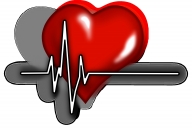New Delhi, Sep 30 (IANSlife) Heart attack, cardiac arrest, heart failure – all three refer to a health emergency involving the heart. And we often use the terms interchangeably, not knowing the difference between each of them. Dr. Ashok Seth, Chairman of Fortis Escorts Heart Institute, and Head of Cardiology Council of Fortis Group of Hospitals explains how a heart attack differs from heart failure.
When the heart is unable to pump blood as well as it should it is called heart failure. Narrowed arteries in your heart or high blood pressure, leave the heart weak, stiff and unable to pump blood efficiently. The term “congestive heart failure” comes from blood backing up into or congesting the liver, abdomen, lower extremities and lungs.
The symptoms of heart failure symptoms are shortness of breath (dyspnea) when you exert yourself or when you lie down; fatigue and weakness, swelling of abdomen, legs, ankles, and feet, rapid or irregular heartbeat, reduced ability to exercise, persistent cough or wheezing with white or pink blood-tinged phlegm, increased need to urinate at night, sudden weight gain from fluid retention and nausea. Risk factors for heart failure, include coronary heart disease, heart attack, diabetes, high BP, some diabetic medications, irregular heartbeat, congenital heart defect, obesity, and substance abuse.
A heart attack, on the other hand, occurs when the flow of blood to the heart is blocked by a build-up of fat, cholesterol and other substances, leading to the formation of plaque in arteries, which feed the heart (coronary arteries). A heart attack is also called myocardial infarction. It can be fatal, but treatment has improved dramatically over the years.
Some symptoms of a common heart attack include pressure, tightness, pain, or a squeezing or aching sensation in your chest or arms that may spread to your neck, jaw or back; indigestion, heartburn or abdominal pain; shortness of breath, cold sweat, fatigue, lightheadedness or sudden dizziness.
The experience of pain may vary from person to person. Some people experience mild pain, others have more severe pain. Some people have no symptoms, while for others, the first sign may be sudden cardiac arrest. The earliest warning may be recurrent chest pain (angina) that’s triggered by exertion and relieved by rest.
A heart attack differs from a condition in which your heart suddenly stops (sudden cardiac arrest, which occurs when an electrical disturbance disrupts your heart’s pumping action and causes blood to stop flowing to the rest of your body).
Here are a few measures to be taken before a patient is shifted to a hospital:
*Make the person sit down and calm. Loosen his/her clothing.
*Transport the patient to the nearest hospital or ambulance service immediately.
*Nothing should be given except for sublingual (under the tongue) or any other medication prescribed by the doctor. A tablet of aspirin helps to limit the damage. A 300 mg aspirin tablet chewed at the time of heart attack can reduce the mortality by 15 to 20 per cent.
*If there is no breathing or pulse, give cardiopulmonary resuscitation (CPR). Immediately place the palm of your hand on the patient’s chest just over the lower part of the sternum (breastbone) and press your hand in a pumping motion once or twice by using the other hand.

